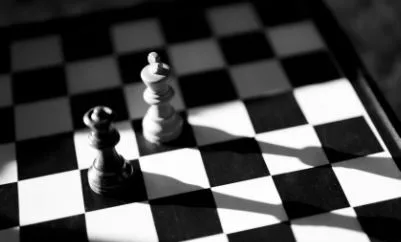Why Personal Growth Requires Both Reflection and Action
In a world that moves at the speed of a notification ping, personal growth often feels like a moving target. We download productivity apps, consume self-help books, or attend weekend workshops hoping to find the magic key to transformation. Yet, many discover that despite all this input, change doesn’t always stick.
The truth is that personal growth is rarely a matter of simply knowing more. It’s about becoming someone new, an ongoing process that requires both reflection and action. Without reflection, action risks being directionless. Without action, reflection risks becoming self-indulgent. The two must work together in a dynamic cycle, a principle that has been part of faith-based training for centuries.
Faith traditions, regardless of denomination, have long emphasised this balance. They encourage individuals to pause, examine their hearts, and align their lives with their values. But they also push believers to step out and live those values in tangible ways. In that balance lies the key to sustainable transformation.
The Role of Reflection: Looking Inward with Honesty
Reflection is the inner work of growth. It’s the space where we assess our motives, question our habits, and explore whether our daily lives match our deepest beliefs. In faith-based contexts, this often takes the form of prayer, meditation, journaling, or scriptural study.
Reflection is not about passive rumination, it’s about purposeful stillness. It’s asking:
- What do I truly value?
- Where am I falling short?
- What strengths am I overlooking?
This process isn’t always comfortable. Honest reflection can uncover patterns we’d rather ignore, resentment, pride, complacency. But without naming these obstacles, they remain invisible barriers to growth.
Psychologists have long confirmed what faith leaders have taught for centuries: self-awareness is foundational for change. Daniel Goleman, author of Emotional Intelligence, identifies self-awareness as the cornerstone of personal and professional success. Without it, we risk moving through life on autopilot, repeating the same mistakes and wondering why nothing changes.
The Role of Action: Putting Insight into Motion
If reflection is the blueprint, action is the building process. It’s where intention becomes reality. Faith-based discipleship training often builds this into its structure, participants are not only asked to learn principles but also to practice them in daily life.
For example:
- A reflection on generosity might be followed by volunteering in the community.
- A study on forgiveness might be paired with reaching out to reconcile a strained relationship.
- Learning about service could lead to mentoring someone in need.
This “learn and do” rhythm creates momentum. Action reinforces the lessons learned during reflection, making them more than intellectual concepts. It also strengthens habits, each step taken in alignment with one’s values makes it easier to repeat the behaviour in the future.
The Reflection–Action Cycle: A Proven Model
When reflection and action feed into each other, they create a self-reinforcing cycle:
- Reflection: You gain insight into your strengths, weaknesses, and opportunities for growth.
- Action: You apply those insights in real-world situations.
- Further Reflection: You assess the results of your actions, what worked, what didn’t.
- Refined Action: You make adjustments and try again, this time more informed.
This cycle mirrors many faith-based discipleship programs, where study and service are intertwined. The training is not just about absorbing content; it’s about becoming a living example of the principles taught.
Why Faith-Based Training Excels in This Balance
Faith-based training, such as the programs offered by Sentones’ Discipleship Training, excels in fostering this reflection–action rhythm for several reasons:
- Clear Framework: Participants know the values they are aiming for, often rooted in timeless principles that transcend trends.
- Accountability: Training often includes mentors or peer groups who encourage consistency.
- Practical Assignments: Lessons come with actionable steps, making it harder to remain a passive learner.
- Long-Term Focus: Faith-based growth is typically seen as a lifelong journey, not a quick fix.
This combination provides a stable structure for sustained personal growth, something many modern self-help systems struggle to deliver.
Avoiding Common Pitfalls
While both reflection and action are necessary, they each have potential pitfalls if pursued in isolation.
- Reflection without Action: This can lead to analysis paralysis, endlessly examining yourself without ever taking steps forward. It may feel like growth, but without behavioural change, insights fade quickly.
- Action without Reflection: This risks burnout or misdirected effort. You may be working hard, but without aligning your actions to your deeper purpose, you may simply be spinning your wheels.
Faith-based training mitigates these pitfalls by ensuring that each stage leads naturally to the other. A period of study is followed by outreach; a service activity is followed by discussion and evaluation.
Modern Applications Beyond Faith Contexts
While the reflection–action cycle is embedded in faith traditions, its applications extend into every area of life. Businesses use it in leadership training. Athletes apply it in skill improvement. Educators use it in experiential learning models.
For example, a leadership development program might start with a 360-degree feedback assessment (reflection), followed by targeted coaching assignments (action). Afterwards, participants review their progress and adjust their strategies before repeating the process.
The principle remains the same: growth is a loop, not a straight line.
Small Steps to Start the Cycle in Your Own Life
You don’t need to enroll in a formal program to begin balancing reflection and action, though structured guidance can certainly help. Here are simple ways to start:
- Set Aside Daily Reflection Time: Even ten minutes of journaling or silent thought can bring clarity.
- Choose One Actionable Step: From your reflections, pick one small change to implement today.
- Track Your Progress: Keep a record of what you tried, what worked, and what you learned.
- Seek Feedback: Share your journey with a trusted friend, mentor, or group.
- Repeat the Process: Keep the loop going—reflection, action, reflection, action.
The Takeaway: Growth is Both an Inside Job and an Outside Job
Personal growth is like breathing, you need both inhale and exhale. Reflection is the inhale, drawing in self-awareness and clarity. Action is the exhale, putting that clarity into the world through behaviour and service.
Faith-based discipleship programs, particularly those that emphasise both inward spiritual formation and outward practical service, provide a powerful model for integrating the two. They show us that lasting transformation comes when we live out what we learn and learn from how we live.
In the end, the most meaningful growth is not measured by how much we know, but by how deeply we live out what we know. Whether you’re seeking spiritual maturity, professional advancement, or personal renewal, the lesson remains: pause long enough to reflect, then move forward with purpose.
If you’d like to explore a free, structured path that combines reflection with action, Sentones Training for discipleship offers guidance designed to help you grow in both faith and life skills, without putting up financial barriers.






